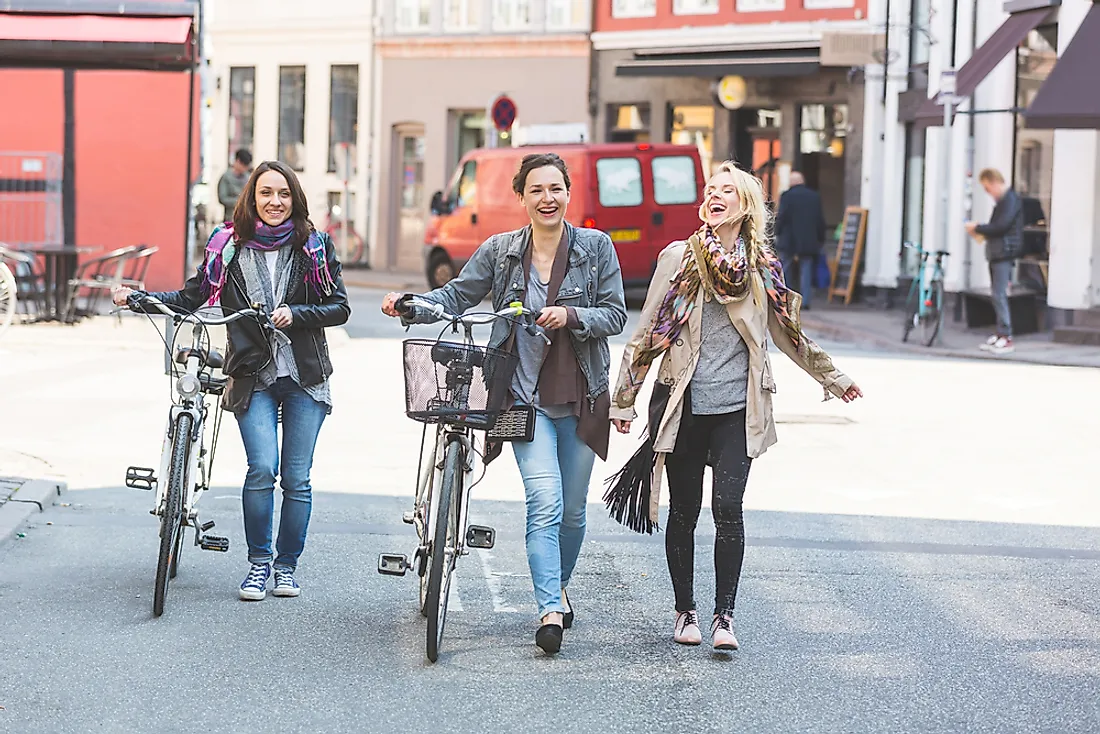Denmark Demographics

Denmark is one of the Scandinavian countries in Europe, and the smallest among the Nordic countries. The country is bordered by Sweden, Germany, and Norway. Denmark covers an area of 42,923 square kilometers and consists of 443 named islands of which only 74 are inhabited. The country is mostly flat with an average elevation of 31 meters above mean sea level. Most parts f the country consist of rolling plains while the coastline is sandy with a bit of forested area. Denmark consists of arable land. The population of the country was estimated at 5,707,251 in 2016 with a median age of 41.4 years. The population growth rate is estimated at 0.22%. 86.9% of the population are Danish while 13.1% are immigrants or children of immigrants. Though there were no official statistics on the number of ethnic groups, there are notable ethnic groups in the country. The largest of these groups are looked at below.
Danish
Approximately 86.9% of the population in Denmark is of Danish descent, being defined as at least one parent born in the country and having Danish citizenship. Danish citizenship can also be achieved through a decree of law if one does not meet the requirement of having either of their parents born in Denmark. There are also Danish living in the Diaspora consisting mainly of emigrants and their descendants. Danes in Denmark are associated to Harald Bluetooth who converted Danes to Christianity in the 10th Century. Since then the Danish have continued to inhabit Denmark. Initially, speaking the Danish language was one of the criteria for being Danish but today for one to be Danish they must have the Danish Citizenship. Danish identity has been built on peasant culture and Lutheran Theology. The contemporary Danish ethnic identity is based on the idea of "Danishness", which is the set of values that have been formed through history acting as a point of historical connection. Danish is not linked to any race or biological heritage enabling the country to integrate other ethnic minority groups. Danishness has also played a significant role in the formulation of working relations between Denmark and European Union. The majority of the Danish practices Christianity both in the country and abroad.
Albanian
Albanian is an Indo-European language mainly spoken in Albania, but also in Kosovo, Greece, Macedonia, and Southern Europe, as well as in Denmark to a smaller degree. The majority of the Danish Albanians, 76%, have been born abroad especially by the emigrants while only 24% were born in the country. Most Albanians have been Christianized and are predominately Orthodox Christians. The Albanian culture is defined by the folk music displaying a variety of influences. The mode of dressing is also uniquely characterized by a distinctive head covering for both men and women.
Arab
The Arab ethnic group consists mostly people born in Arab countries, especially those from Lebanon, Iraq, Jordan, and Syria, although many second-generation Arab Danes were born in Denmark itself. The communities forming this ethnic group migrated from their countries and have acquired citizenship. Most Arab Danes are of Iraqi and Palestinian origin. Arabs are scattered all over the country with no particular part of the country having a majority. The culture of this ethnic group is heavily borrowed from the Arab culture in Asia.
Pakistanis
There were around 12,765 ethnic Pakistanis in Denmark in 2013 who were immigrants, and a further 9,903 who were born in Denmark. They are among the largest ethnic group from a non-western country. The earliest immigrants were in the 1960s and 1970s that went to Denmark as migrant workers and they were mainly from Punjab and Kharian. The Danish government restricted labor migration in 1973 but the group increased through family unification and transnational marriage. In the 1990s the government made further restrictions on family reunification.
Smaller Minorities in Denmark
Other notable ethnic groups living in Denmark include the Bangladeshis, Bosniaks, Chileans, Chinese, and Ethiopians. These ethnic groups are mostly immigrants from countries around the world. They form the ethnic minority in Denmark.
Ethnic Groups Living In Denmark
| Rank | Share of Danish Population | Ethnic Group |
|---|---|---|
| 1 | 86.9% | Danish |
| 2 | 13.1% | Other (including: Albanian, Arab, Bangladeshi, Bosniaks, Chilean, Chinese, Ethiopian, Indian, Inuit, Iranian, Jewish, Kurd, Lebanese, Pakistani, Poles, Somali, Sudanese, Thai, Turk, Vietnamese) |











